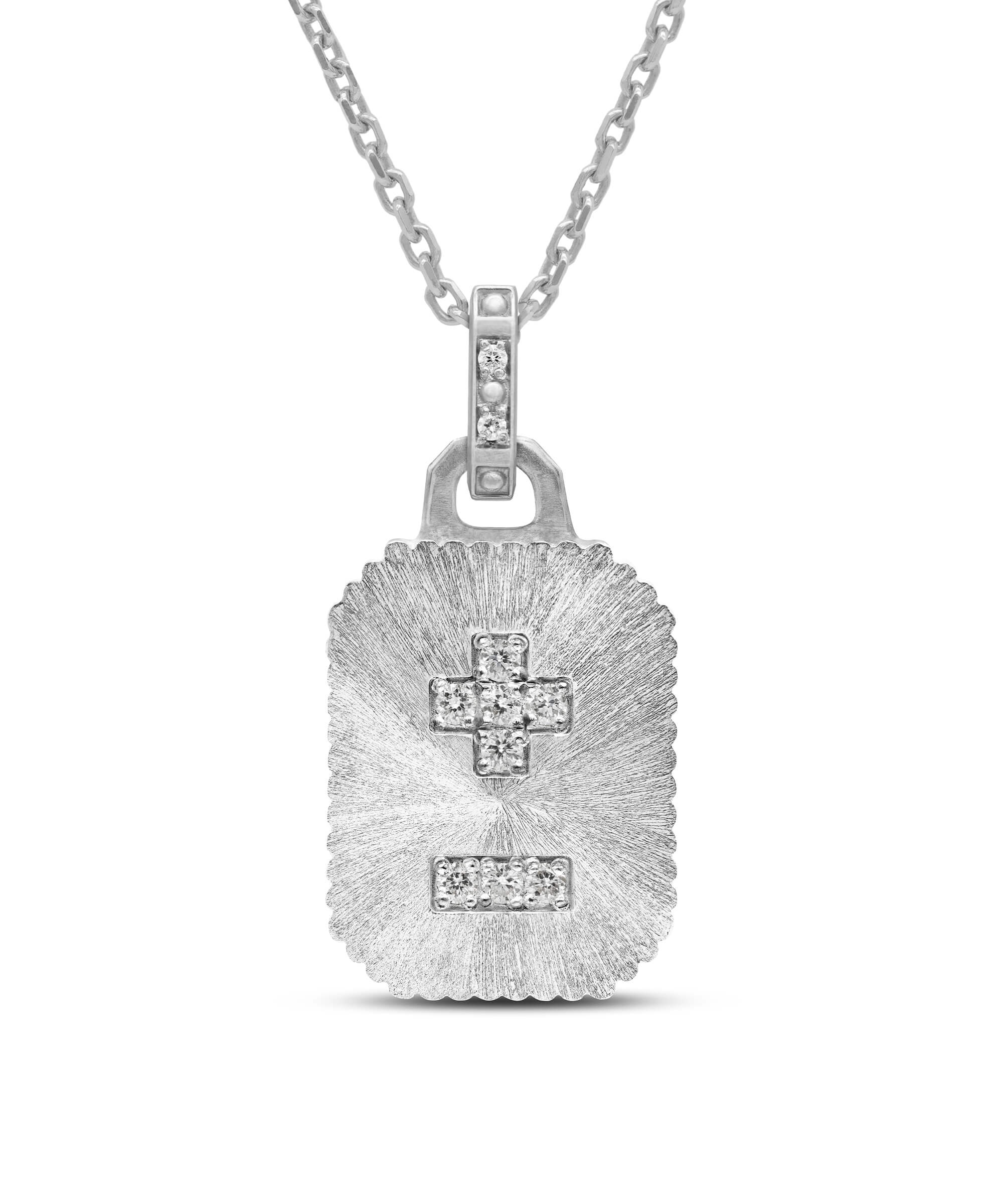In a lyrical voyage across epochs and cultures, the story unveils the profound symbolism of the heart, transcending mere anatomy to embody the essence of human emotion and connection. From the sacred rituals of Ancient Egypt to the whimsical realms of literature, the heart emerges as a universal emblem of love, vitality, compassion, and resilience. With each turn of phrase, it unveils the timeless elegance and enduring allure of this iconic symbol, weaving a tapestry of human experience and emotion that resonates across centuries.
Amuletha™ Book of Symbols
Heart Symbol
The Heart, 1898 by Edvard Munch
In 1898, during the creation of "The Heart," Edvard Munch's tumultuous romantic entanglement with Mathilda Larsen, known as Tulla, unfolded. Their passionate yet turbulent affair was marked by Tulla's desire for marriage, a prospect Munch vehemently opposed'I have always put my art above everything else. Most often I feel a woman would block my way. I decided at an early age to remain unmarried.
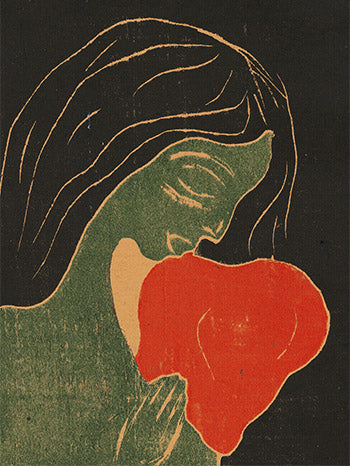
The Heart, 1898 by Edvard Munch
In 1898, during the creation of "The Heart," Edvard Munch's tumultuous romantic entanglement with Mathilda Larsen, known as Tulla, unfolded. Their passionate yet turbulent affair was marked by Tulla's desire for marriage, a prospect Munch vehemently opposed'I have always put my art above everything else. Most often I feel a woman would block my way. I decided at an early age to remain unmarried.
HEART SYMBOL ORIGIN
In the mystical realms of ancient civilizations, the heart was revered not merely as an organ but as the quintessence of life and emotion. In Ancient Egypt, circa 3000 BCE, the heart was the seat of the soul, meticulously preserved during mummification to be weighed against the feather of Ma'at in the afterlife—a ritual that underscored the heart's paramount importance in shaping human destiny. Meanwhile, in the intellectual haven of ancient Greece, Aristotle described the heart as the epicenter of vitality, and Galen, in the 2nd century CE, saw it as the source of the body's heat and circulatory power, highlighting its profound physical and spiritual significance.
The origins of the heart symbol’s graphical representation are as intriguing as a hidden treasure, steeped in the lore of ancient botanicals. In the city of Cyrene, present-day Libya, the seedpod of the silphium plant, revered for its magical medicinal properties, bore a striking resemblance to the heart shape, linking it eternally to fertility and love. Similarly, in ancient Greece, the heart shape mirrored the delicate form of an ivy leaf, symbolizing fidelity and eternal love. These botanical muses imbued the heart symbol with notions of romance and commitment, transforming it into an emblem that transcended time to convey deep emotional and spiritual connections.
As the heart symbol journeyed through the epochs, it evolved into a universal emblem of love, a tale of cultural refinement and artistic enchantment. During the medieval era, the heart began to grace religious manuscripts and art, symbolizing devotion and spiritual love. By the 13th century, it had blossomed into the refined, symmetrical form we recognize today, embodying not only romantic love but also moral purity. The Renaissance, a period of unparalleled artistic and scientific growth, further enriched this symbolism. Leonardo da Vinci’s anatomical sketches, revealing the heart's intricate complexity, reinforced its connection to human emotion. Today, the heart stands as a timeless icon of love, a symbol of passion, commitment, and the very essence of human connection, forever weaving its magic through the tapestry of our lives.
What does heart symbolize
The heart symbol, a universally revered emblem, transcends cultures and time periods, rich with profound symbolism. Here are four refined interpretations of what the heart elegantly conveys:
Love
The heart symbol serenades the language of love, be it romantic, familial, or the bonds of friendship. It speaks to the deep connections and emotions that intertwine souls in exquisite unity and affection.
Vitality
The heart pulses with the essence of life and vitality, mirroring the rhythmic beat of existence. It serves as a poetic metaphor for energy, health, and the vibrant force that animates our very being.
Compassion
Entrenched within the heart symbol is the spirit of compassion and empathy, nurturing understanding and kindness towards others. It signifies the innate ability to share emotions and create meaningful connections through generosity and empathy.
Resilience
The heart embodies inner strength and resilience, symbolizing the grit and courage required to face life’s adversities. It stands as a testament to unwavering fortitude and resilience, empowering individuals to persevere and thrive amidst challenges.
Cultural mention
Throughout human history, few symbols have captured our imagination and emotions as profoundly as the heart. From its sacred role in Ancient Egyptian rituals to its romantic depiction in medieval European manuscripts, the heart has come to embody deep affection and emotional connections. Its vibrant presence in playing cards and its quintessential role in Saint Valentine’s Day celebrations further cement its universal significance. Each facet of this legacy underscores the heart’s enduring allure and timeless elegance across cultures and eras.
Heart symbolism in ancient Egyptian culture and rituals
In Ancient Egypt, the heart was revered as the epicenter of intellect, emotion, and spirit. It played a crucial role in the afterlife, central to the "weighing of the heart" ceremony, where it was measured against the feather of Ma'at, embodying truth. This sacred ritual determined the soul's eternal fate. Unlike other organs removed during mummification, the heart remained within the body, deemed vital for the deceased's journey beyond. Intricately crafted heart scarab amulets, inscribed with protective spells, accompanied mummies, reflecting an exquisite dedication to beauty, precision, and timeless significance that transcends centuries.
The Weighing of the Heart Ceremony, Papyrus of Ani 1250 BC.
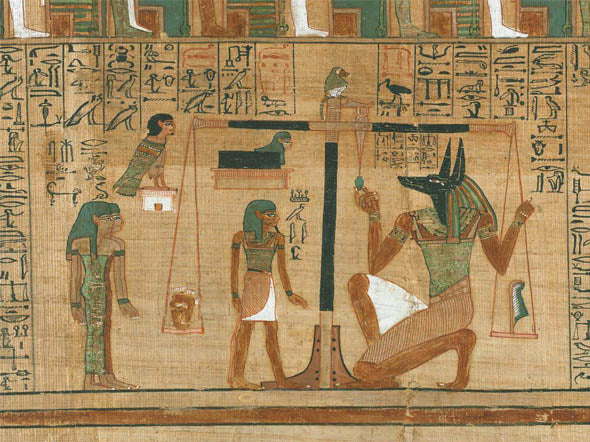
The Weighing of the Heart Ceremony, Papyrus of Ani 1250 BC.
Heart’s evolution to the symbol of love
In the 1250s French manuscript "Roman de la Poire", the heart symbol makes its earliest known appearance in the form we recognize today. This manuscript is notable for its depiction of a lover offering his heart to a lady, a gesture that visually established the heart as a symbol of love. The heart is stylized in a shape resembling the modern symbol, emphasizing the romantic notion of love. This representation played a pivotal role in the evolution of the heart symbol, cementing its association with romantic affection in Western culture. The “Roman de la Poire” thus stands as a key historical artifact in the heart symbol's rich and enduring legacy.
*Illustration from "Le romane de la poire", 13th century
Illustration from fol. 41 of Ms. fr. 2186, the kneeling man is an allegory of Doux Regard ("sweet gaze") handing the damsel the lover's heart. This is the earliest known depiction of the human heart in a metaphorical context signifying "romantic love", which over the next two centuries would give rise to the now-familiar heart symbol.
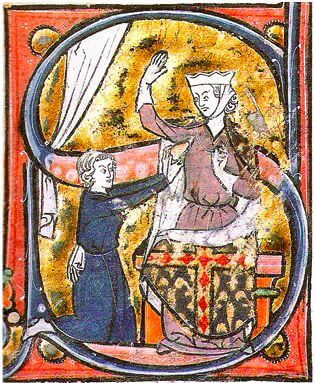
*Illustration from "Le romane de la poire", 13th century
Illustration from fol. 41 of Ms. fr. 2186, the kneeling man is an allegory of Doux Regard ("sweet gaze") handing the damsel the lover's heart. This is the earliest known depiction of the human heart in a metaphorical context signifying "romantic love", which over the next two centuries would give rise to the now-familiar heart symbol.
The heart of playing cards
The Hearts suit in playing cards, originating in 15th-century France, is a key component of the standard deck. Representing the clergy in medieval card symbolism, the suit reflects a connection to the Church and the spiritual realm. The red heart design became prominent due to its simple yet striking visual appeal, making it easily recognizable. Over time, hearts have maintained their place in the deck, symbolizing various aspects of human life. In Tarot the Queen of Hearts often signifies a nurturing figure, while the Ace of Hearts indicates a significant moment or turning point. The suit's history and enduring presence highlight its importance in card games and cultural traditions.
Salvador Dali, Queen of Hearts 1969
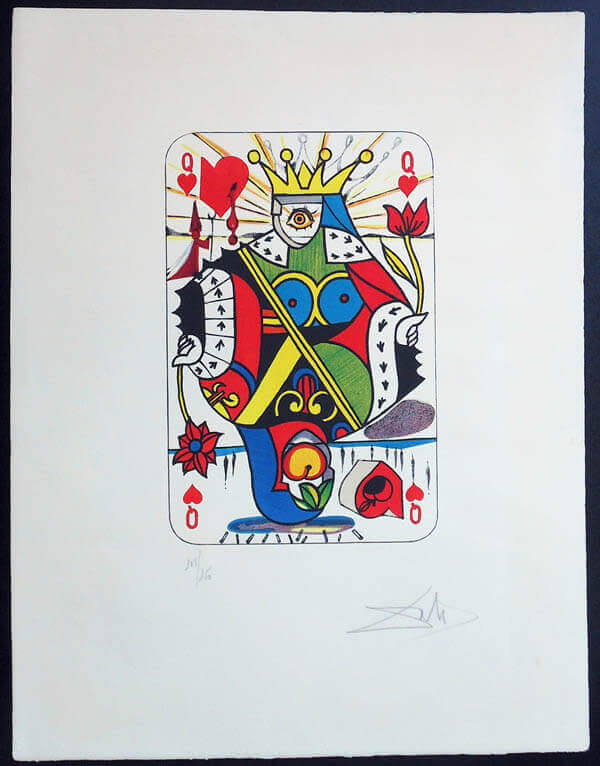
Salvador Dali, Queen of Hearts 1969
Enchanting origins of Valentine’s hearts
The heart symbol, deeply entwined with Saint Valentine’s Day, epitomizes timeless romance and profound affection. The enigmatic origins of St. Valentine, believed to be a martyred priest who defied Emperor Claudius II by performing secret marriages around 270 AD. In the 14th century Geoffrey Chaucer’s poetry first linked St. Valentine with romantic love, where he described February 14th as a day when birds and humans come together to find a mate. Interestingly, the oldest known Valentine's Day card in existence is a poem written by Charles, Duke of Orleans, to his wife while he was imprisoned in the Tower of London in 1415. Over time, the celebration evolved, and by the 17th century, exchanging heart-shaped tokens and love notes had become a cherished custom. St. Valentine's feast day on February 14th transformed into a universal celebration of love and devotion, with the heart symbol becoming its quintessential emblem.
Valentine’s Day card made of Ink and watercolor on paper, and envelope from 1799.
Additional Text Regular
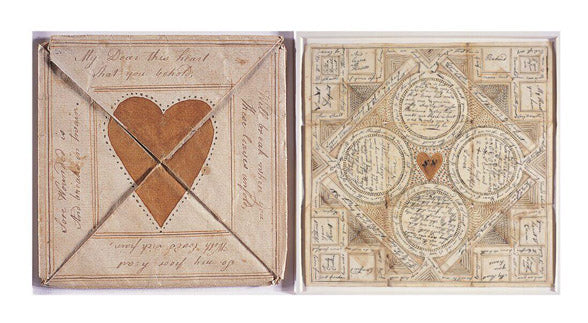
Valentine’s Day card made of Ink and watercolor on paper, and envelope from 1799.
Additional Text Regular
Heart symbol in the world of jewelry
Heart symbol jewelry, a timeless emblem of affection, elegantly captures the essence of deep emotions. Adored by individuals of all ages, it transcends generational divides, offering meaning and beauty in equal measure. For the young, it represents the excitement of newfound love, while for the mature, it signifies enduring commitment and cherished memories.When given as a gift, heart symbol jewelry becomes a tangible expression of love and sentiment, perfect for special occasions like birthdays, anniversaries, or heartfelt declarations. For those who select these exquisite pieces for themselves, the jewelry evolves beyond mere adornment, representing self-love and empowerment, a celebration of one's worth and aspirations.Heart symbol jewelry weaves itself into various life narratives. A mother gifting a heart pendant to her daughter symbolizes enduring love and support during new beginnings. Friends exchange heart jewelry to signify solidarity and care. These pieces also inspire creativity, whether worn for significant events or as daily reminders of personal growth and self-discovery. At AMULETHA™, we continue this legacy, crafting pieces that embody both personal and cultural significance, making each one a treasured keepsake.
HEART SYMBOL IN LITERATURE
In the realm of literature, the heart symbolizes a rich tapestry of emotions ranging from love and passion to vulnerability and resilience. Across diverse genres the heart becomes a profound emblem, encapsulating the depths of human experiences and desires. Particularly prevalent in poetry, it often assumes a persona, lending voice and agency in tales of love, yearning, and sorrow. In fiction, the heart holds sway, serving as a metaphor for character motivations and moral quandaries. Across cultures and languages, the heart's significance remains unbound, enduring as a universal emblem of the human condition.
Alice's Adventures in Wonderland by Lewis Carroll
Born out of Lewis Carroll's spontaneous storytelling to entertain a young girl named Alice Liddell during a boating trip in 1862, "Alice in Wonderland" has since captivated readers of all ages with its fantastical elements and nonsensical logic. Within this whimsical realm, the heart takes on a central role, symbolizing authority, passion, and unpredictability. At the helm of this symbolism stands the formidable Queen of Hearts, whose love for hearts mirrors her impulsive and irrational behavior, often resulting in orders for beheadings at the slightest offense. Carroll's depiction of the Queen as a figure of unchecked passion adds complexity to the heart's significance, revealing the chaotic nature of human emotions.
“I pictured to myself the Queen of Hearts as a sort of embodiment of ungovernable passion – a blind and aimless Fury.” - Lewis Carroll
Alice in Wonderland by Tim Burton, 2010
Tim Burton's adaptation of "Alice in Wonderland" brings a dark and fantastical twist to the classic tale. With his signature gothic style, Burton creates a visually stunning and eccentric world for Alice to navigate. The film explores themes of identity, destiny, and the power of imagination, offering a unique and surreal perspective on the beloved story.
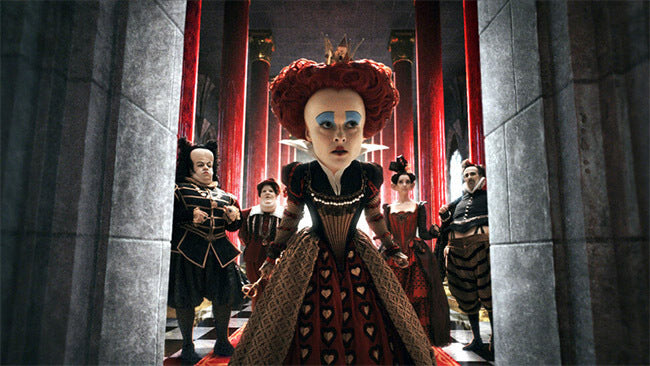
"Sonnet 46" by William Shakespeare
Mine eye and heart are at a mortal war,
How to divide the conquest of thy sight;
Mine eye my heart thy picture’s sight would bar,
My heart mine eye the freedom of that right.
My heart doth plead that thou in him dost lie,
A closet never pierced with crystal eyes,
But the defendant doth that plea deny,
And says in him thy fair appearance lies …
In Shakespeare's sonnet, he personifies his eyes and heart as engaged in a battle for possession of the image of his beloved, the Fair Youth. The poet's heart claims to possess the true essence of the young man, which no eye, no matter how perceptive, can fully grasp.
"When I Was One-and-Twenty" by A. E. Housman
When I was one-and-twenty
I heard a wise man say,
‘Give crowns and pounds and guineas
But not your heart away;
Give pearls away and rubies
But keep your fancy free.’
But I was one-and-twenty,
No use to talk to me …
“When I Was One-and-Twenty" by A.E. Housman delves into the conflict between youthful idealism and experienced wisdom, as the speaker recalls advice to guard against giving away one's heart too freely. The poem captures the speaker's defiance of this cautionary guidance at the age of twenty-one, showcasing the hubris of youth in matters of love and vulnerability.
“Heart, we will forget him” by Emily Dickinson
Heart, we will forget him,
You and I, tonight.
You may forget the warmth he gave,
I will never forget the light.
When you have done, pray tell me,
That I my thoughts may dim;
Haste! Lest while you’re lagging
I may remember him!
The poem by Emily Dickinson explores themes of heartache, resilience, and the struggle to move on from a past love. Dickinson's use of personification gives the heart a voice and agency, allowing readers to empathize with its pain and eventual resolution. The poem's brevity and emotional intensity make it a powerful exploration of the complexities of love and loss.
Thoughts
Thoughts placed alongside a symbol resonate with its meaning, serving as a guide to expand your understanding of the symbol's significance in relation to your personal experiences. This approach invites a deeper contemplation of how symbolic meanings can reflect and enrich your life’s narrative, enhancing your appreciation of both the symbol and its broader implications.
Eternal bond - Love's enduring connection transcends time, uniting souls in profound intimacy and unwavering devotion, a timeless symphony of hearts.
Vibrant essence - Vitality pulsates, infusing life with energy and vigor, driving us forward on the journey of existence with boundless enthusiasm.
Empathetic embrace - Compassion, a tender beacon, fosters understanding and kindness, knitting hearts together in a tapestry of empathy and support.
Unyielding resolve - Resilience epitomizes unwavering strength, empowering individuals to confront adversity with courage and emerge victorious, resilient in the face of life's tribulations.
FREQUENTLY ASKED QUESTIONS
IS THE HEART SYMBOL UNIVERSALLY RECOGNIZED?
The heart is a universally recognized symbol of love, compassion, transcending cultural boundaries. It holds deep significance in various contexts, symbolizing romantic feelings and spiritual interconnectedness. Its universal appeal and profound meaning resonate across diverse cultures and backgrounds.
DOES THE HEART SYMBOL HAVE A SPIRITUAL MEANING?
The heart symbol holds spiritual significance across many cultures and beliefs, representing the essence of one's soul, inner wisdom, and divine love. It serves as a beacon of spiritual connection, compassion, and intuition, symbolizing the seat of emotions and the source of spiritual growth. The heart symbol often embodies characteristics such as purity, compassion, and unconditional love, guiding individuals on a path towards self-awareness, empathy, and spiritual enlightenment.
WHAT DOES HEART PIERCED BY AN ARROW MEAN?
The heart and arrow symbolism often conveys themes of love, desire, and passion. The arrow piercing the heart can symbolize the experience of falling in love or being struck by Cupid's arrow, representing the emotional intensity and vulnerability that love brings. This iconic imagery encapsulates the notions of romantic attraction, affection, and the sometimes exhilarating or painful journey of love.
WHAT IS THE SIGNIFICANCE OF THE ESOTERIC HEART SYMBOL?
The esoteric heart symbol holds various meanings beyond its conventional representation of love. In esoteric contexts, the heart symbol can symbolize profound spiritual concepts such as compassion, empathy, inner wisdom, and interconnectedness. It may represent the seat of the soul, the source of intuition, or a center of divine consciousness. The esoteric heart symbol often embodies a deeper understanding of universal love, transcendence, and the deeper mysteries of existence. It serves as a reminder of the intrinsic connection between the self and the greater cosmic energies, reflecting the journey towards spiritual enlightenment and inner transformation.













